Related Research Articles
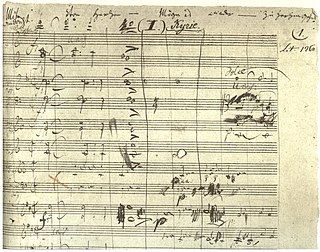
The Missa solemnis in D major, Op. 123, is a Solemn Mass composed by Ludwig van Beethoven from 1819 to 1823. It was first performed on 7 April 1824 in Saint Petersburg, Russia, under the auspices of Beethoven's patron Prince Nikolai Galitzin; an incomplete performance was given in Vienna on 7 May 1824, when the Kyrie, Credo, and Agnus Dei were conducted by the composer. It is generally considered one of the composer's supreme achievements and, along with Bach's Mass in B minor, one of the most significant Mass settings of the common practice period.
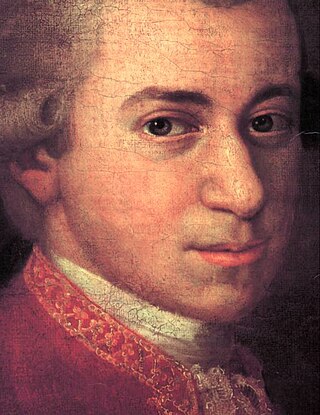
The Requiem in D minor, K. 626, is a requiem mass by Wolfgang Amadeus Mozart (1756–1791). Mozart composed part of the Requiem in Vienna in late 1791, but it was unfinished at his death on 5 December the same year. A completed version dated 1792 by Franz Xaver Süssmayr was delivered to Count Franz von Walsegg, who commissioned the piece for a requiem service on 14 February 1792 to commemorate the first anniversary of the death of his wife Anna at the age of 20 on 14 February 1791.
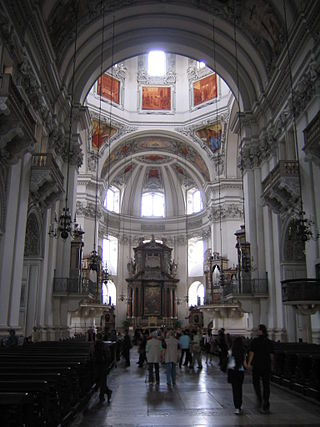
The Krönungsmesse, composed in 1779, is one of the most popular of Wolfgang Amadeus Mozart's 17 extant settings of the Ordinary of the Mass. It can be classified as either a Missa brevis or a Missa solemnis because although it includes all the sections of the Ordinary, it is relatively short.

The Missa brevis No. 9 in B-flat major by Wolfgang Amadeus Mozart, K. 275/272b, was probably written before September 1777 for Salzburg. The mass is scored for SATB soloists, SATB choir, violin I, violin II, 3 trombones, string bass, and organ.

The Missa brevis in G major, K. 140, K3 Anh. 235d, K6 Anh. C 1.12, was probably composed by Wolfgang Amadeus Mozart shortly after returning to Salzburg, in March 1773, from his third trip to Italy.

The Sparrow Mass is a mass in C major K. 220/196b, Mass No. 9, Missa brevis No. 5, composed by Wolfgang Amadeus Mozart in 1775 or 1776 in Salzburg. The mass is sometimes termed a missa brevis et solemnis, because it is short in a simple structure as a missa brevis, but festively scored like a missa solemnis with brass and timpani in addition to four soloists, strings and organ. It was possibly first performed on 7 April 1776 in a mass for Easter at the Salzburg Cathedral. The nickname is derived from violin figures in the Hosanna which resemble bird chirping.

The Missa solemnis in C major by Wolfgang Amadeus Mozart, K. 337, was written in 1780 for Salzburg. It was Mozart's last complete mass. The mass is scored for soloists, choir, 2 oboes, 2 bassoons, 2 trumpets, 3 trombones, strings and organ, the latter supplying figured bass for most of the duration.

Wolfgang Amadeus Mozart's Piano Sonata in F major, K. 547a is a sonata in two movements. It was originally published as an original sonata by Breitkopf and Härtel in 1799 but was soon found to be an amalgam of movements culled from other compositions. It is sometimes called Mozart's Piano Sonata No. 19.
The Sonata in F for Violin and Keyboard, K. 547, was completed in Vienna on July 10, 1788 by Wolfgang Amadeus Mozart. The sonata is often nicknamed "For Beginners" and was completed two weeks after the similarly nicknamed piano sonata in C major, K. 545. Unlike the previous few keyboard sonatas, where the violin played an equal role, this sonata is dominated by the keyboard part. In that regard, only the violin part is easy and the keyboard part is not "for beginners".

The Missa brevis No. 8 in C major, K. 259, is a mass composed by Wolfgang Amadeus Mozart in 1776. It is scored for SATB soloists, SATB choir, violin I and II, 2 oboes, 2 clarini, 3 trombones colla parte, timpani and basso continuo.
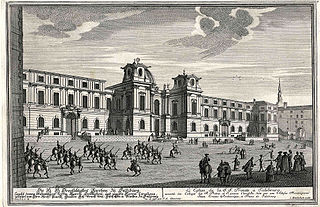
The Missa in honorem Sanctissimae Trinitatis in C major, K. 167, is a mass composed by Wolfgang Amadeus Mozart in June 1773. It is scored for SATB choir, violin I and II, 2 oboes, 2 clarini, 2 trumpets, timpani and basso continuo.

The Credo Mass in C major, K. 257, is a mass composed by Wolfgang Amadeus Mozart in 1776. It is scored for SATB soloists, SATB choir, violin I and II, 2 oboes, 2 clarini, 3 trombones colla parte and basso continuo.

The Missa solemnis in C major, K. 66, is a mass composed by Wolfgang Amadeus Mozart in 1769. It is scored for SATB soloists and choir, violins I and II, viola, 2 oboes, 2 horns, 2 clarini, 2 trumpets and basso continuo.

The Missa brevis in D major, K. 194/186h, is a mass composed by Wolfgang Amadeus Mozart and completed on 8 August 1774. It is scored for SATB soloists, SATB choir, violin I and II, 3 trombones colla parte, and basso continuo.

The Missa brevis No. 7 in C major, K. 258, is a mass composed by Wolfgang Amadeus Mozart in 1776. It is scored for SATB soloists, SATB choir, violin I and II, 2 oboes, 2 clarini, 3 trombones colla parte, timpani and basso continuo.

The Missa longa in C major, K. 262/246a, is a mass composed by Wolfgang Amadeus Mozart in May 1776. Other sources claim it was composed in May 1775. It is scored for SATB soloists, SATB choir, violin I and II, 2 oboes, 2 horns, 2 clarini, 3 trombones colla parte, timpani and basso continuo.
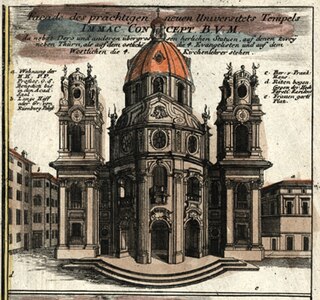
The Missa brevis in D minor, K. 65/61a, is a mass composed by Wolfgang Amadeus Mozart and completed on 14 January 1769. It is scored for SATB soloists and choir, violin I and II, 3 trombones colla parte, and basso continuo.
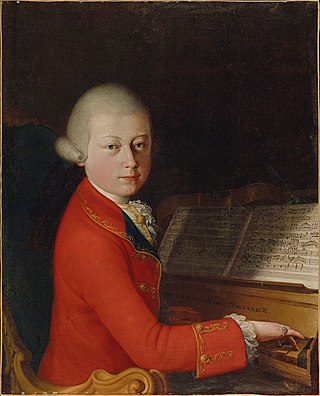
Mozart's Mass in G major, K. 49/47d), is his first full mass. It is a missa brevis scored for SATB soloists and choir, violin I and II, viola, and basso continuo.
Mozart's Twelfth Mass is a commonly used title for a setting of the mass formerly attributed to Wolfgang Amadeus Mozart. Under this title, which was given to it by an English publisher, the piece attained great popularity in the 19th century and contributed to Mozart’s reputation. Today the piece is generally attributed to Wenzel Müller.
Regina coeli, a Marian antiphon, was set by Wolfgang Amadeus Mozart three times during his time at the Salzburg Cathedral. The best-known composition of the Latin Regina caeli for Eastertide is K. 276, a setting for four soloists, choir and orchestra, probably written in 1779. He wrote two earlier settings, K. 108 and K 127, both for soprano, choir and orchestra.
References
- ↑ Carli, Ballola e Parenti (1996). Rusconi Libri (ed.). Mozart. Milan. p. 531.
- 1 2 Zaslaw, Neal, with Cowdery, William eds., The Compleat Mozart: A Guide to the Musical Works of Wolfgang Amadeus Mozart, p. 298, New York: W.W. Norton & Co., 1990, ISBN 0-393-02886-0 Google Books
- ↑ Herman Abert (translated by Stewart Spencer), W.A. Mozart, p. 51, Yale University Press, 2007, ISBN 978-0-300-07223-5 Google Books
- ↑ Dennis Shrock, Choral repertoire, p. 380, New York: Oxford University Press, 2009, ISBN 978-0-19-532778-6 Google Books
- ↑ The Salzburg Church Music of Mozart and His Predecessors Karl August Rosenthal and Theodore Baker The Musical Quarterly , Vol. 18, No. 4 (Oct., 1932), pp. 559-577 Published by: Oxford University Press Article Stable URL: https://www.jstor.org/stable/738939
- ↑ Mozart, Wolfgang Amadeus (1981). Guanda (ed.). Letters: a cura di Enzo Siciliano. Parma.